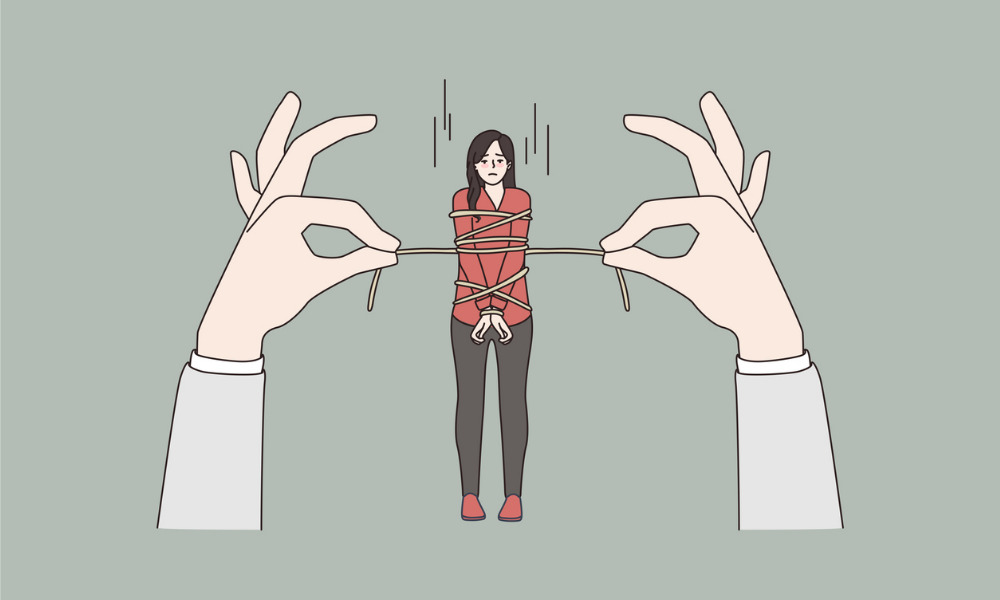Failure to address issue is akin to death by a thousand cuts, specialist tells COS

Often thought of as being more of an HR issue by an organization, the mental and physical effects of harassment and bullying at work actually place it squarely as a health and safety issue. Allowing toxic behaviours to develop at work can have serious consequences for workers and for employers.
For the business in general, ensuring that workers are mentally well, have clarity and are present in the workplace “focused and concentrating” is making sure that they are productive. “That’s your reputation as a workplace, that’s what you want – a successful, productive, good reputation,” says Linda Crockett, Specialist in Workplace Bullying Prevention and Intervention, Canadian Institute of Workplace Bullying Resources.
However, if you happen to have someone in the workplace who is toxic or a leader who has poor communication skills or is insecure and feels threatened by another employee, then they are bringing in subtle (or less subtle), “insidious nuances” of psychological harassment.
“If you don’t nip that in the bud in the beginning when it’s incivility or abrasiveness or just rudeness, then it progresses to become psychological harassment or bullying,” says Crockett. She says it is akin to death by a thousand cuts. It is a very serious hazard.
Subscribe to our free newsletter to stay up-to-date with the world of safety.
“If the person affected is starting to get offended everyday by an insult, or they feel humiliated or embarrassed, they’re starting to shrink, they’re started to hide, they’re starting to isolate because they don’t want to be hurt again,” she says. It wears on the worker, and they start to lose focus or lack sleep, which can create very serious hazards at work.
For example, many studies show that lack of sleep or insomnia has very a very harmful impact on the body, and can lead a worker to make mistakes at work that could result in an injury or even a fatality. Harassment and bullying doesn’t just affect a worker mentally (anxiety, depression, panic attacks), it can result in physical injury too.
Workers bearing the brunt of bullying or harassment may become hyper vigilant, which Crockett says is another “exhausting experience.” The physical effects of these attacks could lead them to develop digestive issues such as stomach ulcers, or a poor immune system, or cardiac issues, migraines, etc.
For the employer, this issue can result in loss of productivity but also medical leave, legal cases, compensation costs and in the most serious cases, suicide. And this is why employers and safety professionals need to take bullying and harassment seriously, and understand why it is a health and safety issue.
So what can safety professionals do to help? “First of all, they have to have the knowledge,” says Crockett. “A lot of people have assumptions, they have these myths, they have these stereotypes – we’ve got to clear that up.” There’s an awful lot of confusion about the definition of bullying and harassment which needs to be addressed with the proper information and training.
And these pre-conceived notions can’t be addressed with a simple webinar or course. Leaders and employees need to be fully trained on taking a holistic view of trauma. They also need to take a zero tolerance approach, and be accountable for their actions.
Crockett says that research shows that over 70 per cent of bullying within an organization is coming from the top down. “This is good information for leadership to know,” she says, “are your leaders competent? And are they confident? Because if they are, they’re not going to bully.” Organizations also need to take a look at their leadership styles and hiring practices, but also at mentoring, monitoring, and coaching their leadership team to take a cohesive view of workplace bullying and harassment.
Employers and safety professionals should also frequently review their policies and programs, and follow through 100 per cent as a good example for staff, says Crockett. “Your staff is watching you if you’re not following through then why should they? If you’re not a good role model, why should they be?”





